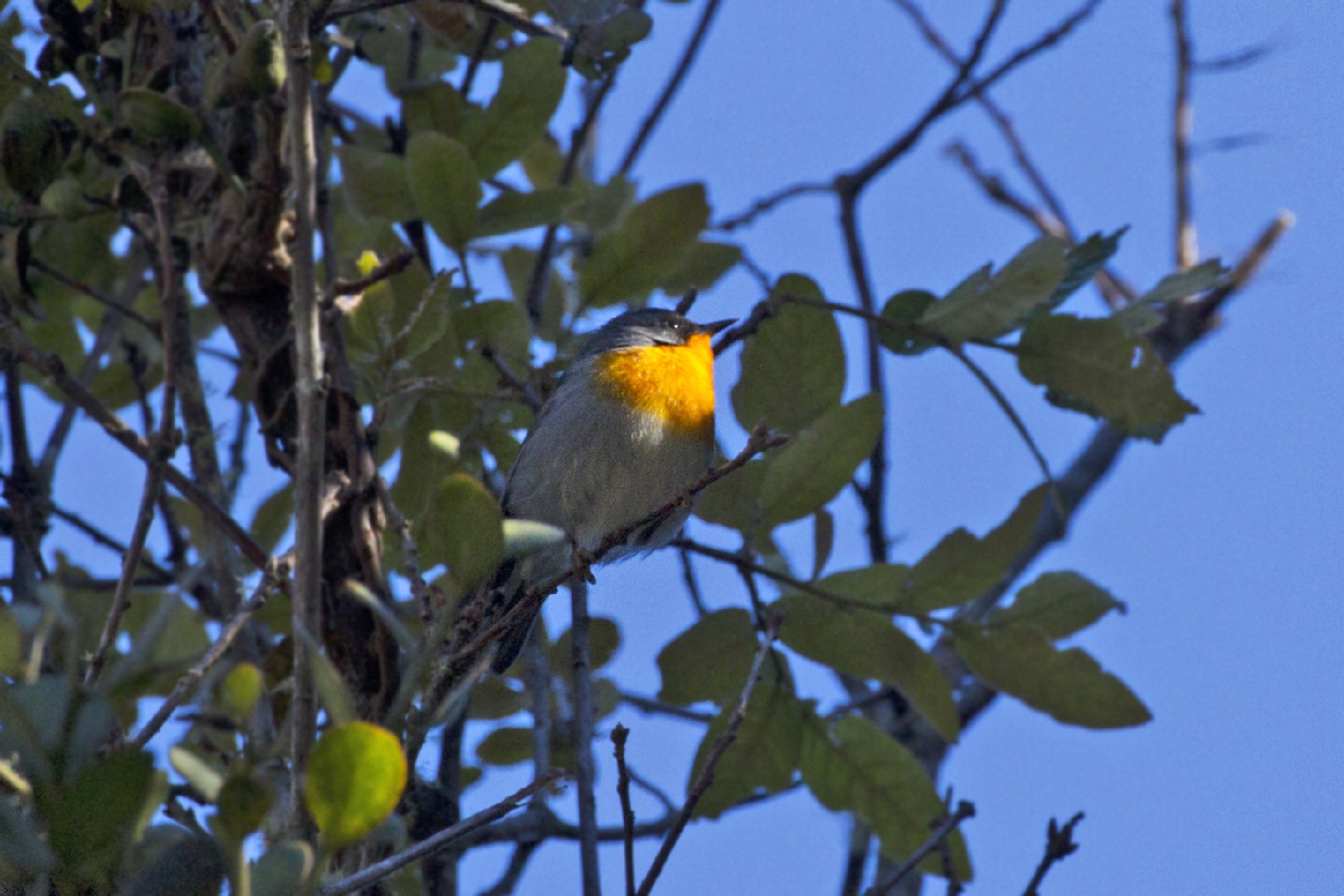Flame-throated Warbler
A species of Flame-throated and Crescent-chested Warblers Scientific name : Oreothlypis gutturalis Genus : Flame-throated and Crescent-chested Warblers
Flame-throated Warbler, A species of Flame-throated and Crescent-chested Warblers
Botanical name: Oreothlypis gutturalis
Genus: Flame-throated and Crescent-chested Warblers
Content
Description General Info
 Photo By Charley Hesse TROPICAL BIRDING
Photo By Charley Hesse TROPICAL BIRDING Description
The adult flame-throated warbler is 12 cm (4.7 in) long and weighs 10 g (0.35 oz). It has slate grey upper parts, with black on the back, lores, and around the eye. It has a vermilion throat and breast which contrast with the whitish belly. The sexes are almost identical, but the black mask is more extensive in the male. The young bird is browner above, duller below, and has a weak buff eyestripe and wing bars. The call of this warbler is a sharp chit. The song is a buzzing pi pipipipi shwaaaa. 
Size
12 cm
Nest Placement
Shrub
Feeding Habits
Flame-throated Warbler primarily feed on insects and invertebrates including caterpillars, spiders, and various insect groups like Diptera, Hymenoptera, and beetles. They occasionally consume berries. They forage in foliage, exhibiting adept hunting skills, and show a preference for certain arthropods.
Habitat
Flame-throated Warbler typically inhabits humid montane forests and the edges of these forests. This species prefers elevated regions, dwelling mainly in the understory where the climate is moist and cooler, a characteristic of higher altitudinal zones. They are found in broad geographic areas characterized by this habitat type, generally avoiding lowland tropical areas and open landscapes.
Dite type
Insectivorous
General Info
Feeding Habits
Bird food type
Behavior
The deep cup nest, always sheltered above by epiphytes or mosses, is built in a tree or on a low bank. Two white eggs are laid between March and May. The flame-throated warbler feeds on caterpillars, insects and spiders picked off the foliage with its sharp pointed bill. It is territorial when breeding, but will join feeding flocks of insectivorous birds at other times. 
Distribution Area
This species is a resident breeder within the Talamancan montane forests of Costa Rica and western Panama, where it occurs in the canopy, woodland edges, and clearings with trees typically from 2,100 m (6,900 ft) up to the timberline. On the Caribbean slope in the wet season it may occur down to as low as 1,400 m (4,600 ft). 

 Photo By Charley Hesse TROPICAL BIRDING
Photo By Charley Hesse TROPICAL BIRDING Scientific Classification
Phylum
Chordates Class
Birds Order
Perching birds Family
New world warblers Species
Flame-throated Warbler